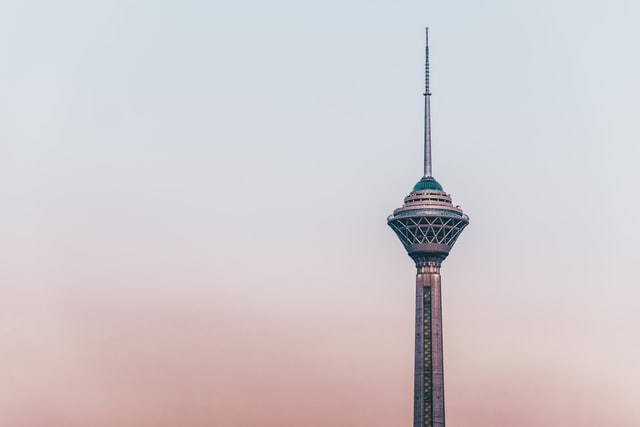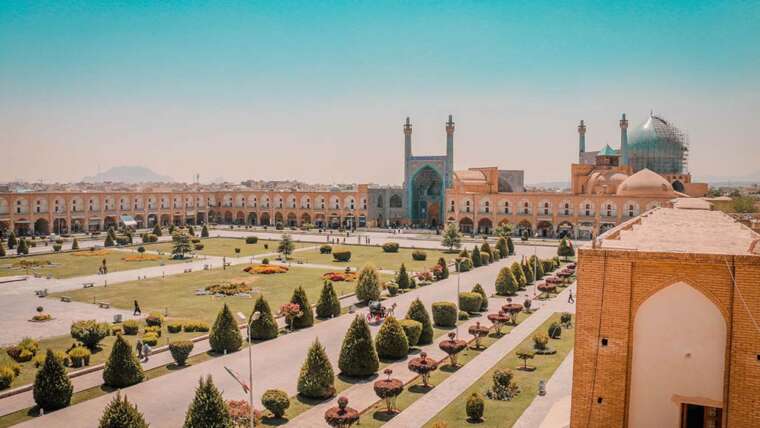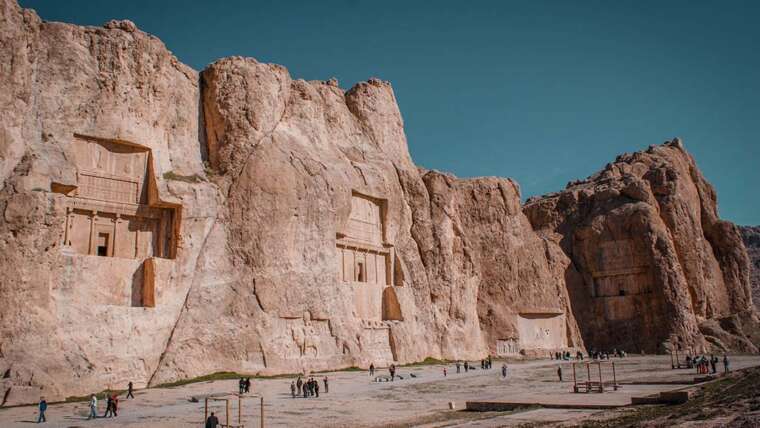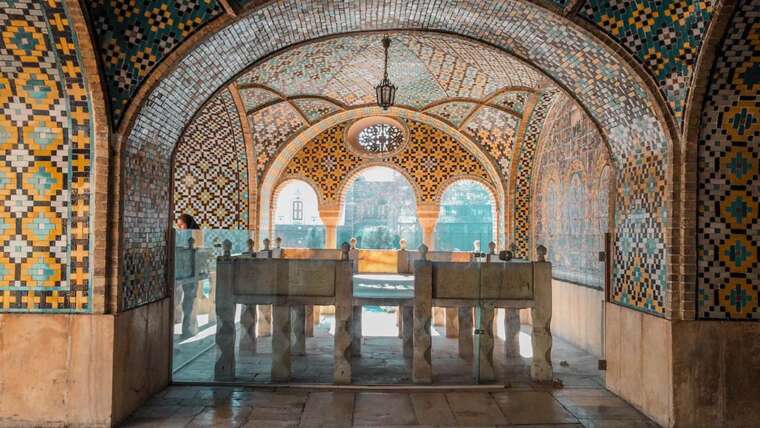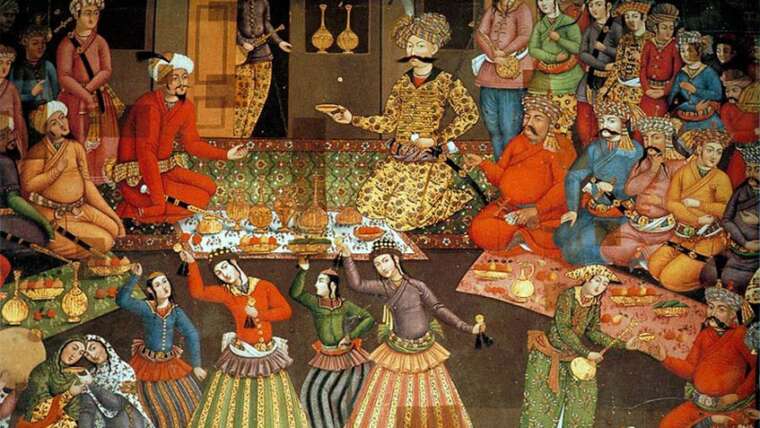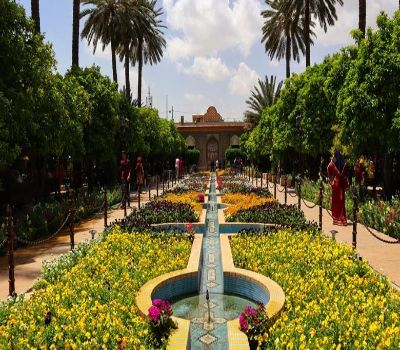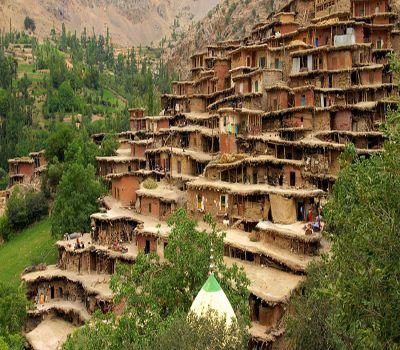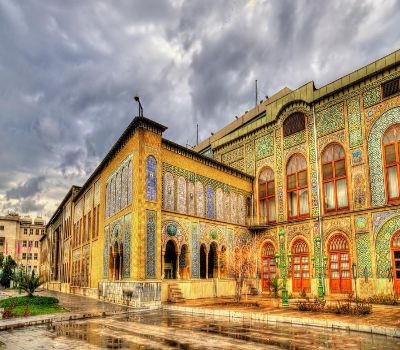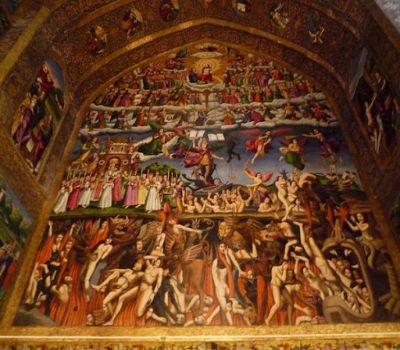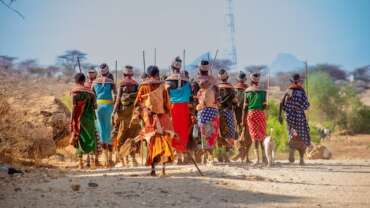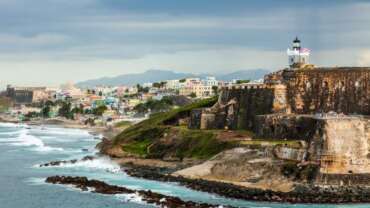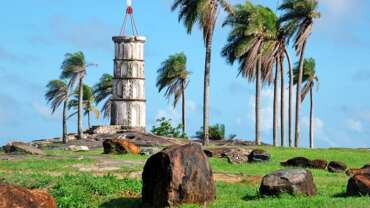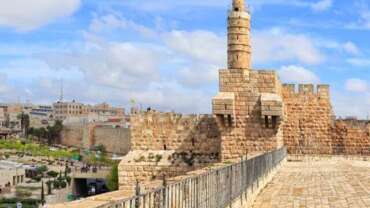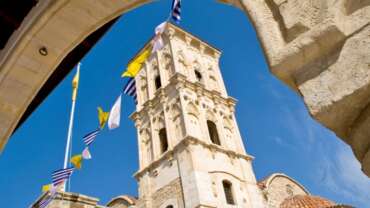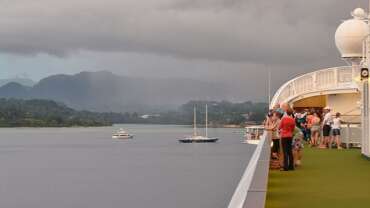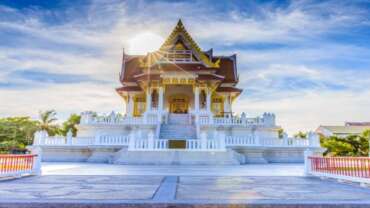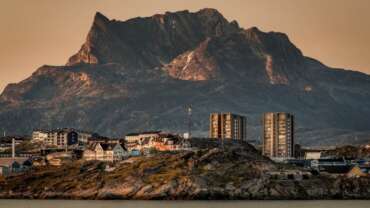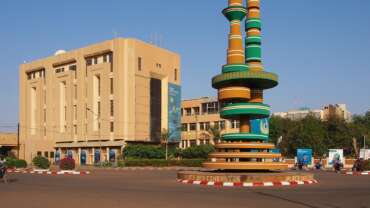Majestic Iran: A Different Experience
Iran is quite simply one of the most fascinating countries you can visit on holiday. Birthplace to one of the world’s great empires, Iran has been subsequently dominated and influenced by a host of cultures whose architectural remains lie scattered across the country.
Why we love Iran?
Over many years of organising Iran holidays, our experience is of a friendly, hospitable and cultured nation that will extend a warm welcome to you. It’s one of the many ironies of this complicated country that a nation with an international reputation for hostility should be inhabited by people of such generosity.
What to expect on a holiday to Iran?
The cuisine in Iran is delicious with freshly cooked food and plentiful fruit. Internal transportation will typically involve some longish journeys in 4×4 vehicles, with some internal flights. Hotel accommodation is best described as being adequate and functional; however, it is possible to travel through Iran in luxury on the Golden Eagle Train.
In today’s Iran, glossy shopping malls are de rigueur. The girls and boys who stroll contentedly along are worlds apart from general impressions of Iran. They are young, beautiful and fashionable – their hair coiffed and styled as if on a fashion shoot. This society is young and modern and so different from the images that look down from billboards of men dressed in robes and turbans.
We have been sending people to Iran continuously for over two decades on group tours and tailor-made holidays. Our experts have travelled there extensively and will be able to give you all the little-known knowledge you need to get the most out of your visit.
UNESCO Intangible Cultural Heritage In Iran
According to UNESCO, “cultural heritage does not end at monuments and collections of objects. It also includes traditions or living expressions inherited from our ancestors and passed on to our descendants, such as oral traditions, performing arts, social practices, rituals, festive events, knowledge and practices concerning nature and the universe or the knowledge and skills to produce traditional crafts”. In 2003, UNESCO Intangible Cultural Heritage Convention has proposed the above five broad domains of Intangible Cultural Heritage because Intangible cultural heritage plays an important role in protecting cultural diversity against the process of globalization and social transformation. Safeguarding such heritages contributes to intercultural dialogue and promotes mutual respect for other lifestyles. To this end and after the convention, UNESCO began to register the cultural and spiritual heritage of all countries, and national commissions were set up in each country to introduce the intangible heritage that meets the requirements for global registration.
Skills of Crafting and Playing Iranian Dotār
Dotār is the oldest stringed musical instrument not only in Iran, but also in all the Middle East and Central Asia. The depiction of this musical instrument is existing in some of the ancient rock reliefs. In a book composed in Pahlavi language Dotār is called Tanbur or Tambur.
Pilgrimage to the St. Thaddeus Apostle Monastery
Pilgrimage to the St. Thaddeus Apostle Monastery was added to the list of the Intangible Cultural Heritage of Humanity (UNESCO). The monastery of St. Thaddeus (also known as the Qara Kelisa) is located in the province of West Azerbaijan, 20 km from the southwest of Maku City, in proximity to a village with the same name.
Qalishuyan (Carpet Washing) Ritual in Mashhad-e Ardehal
There are some nearby villages in the west of Kashan City which is called Aredhal altogether. The center of these villages is Mashhad-e Ardehal that is also known as Mashhad-e Qali (means carpet) by the locals. Being the martyrdom place of one of the Shia’ Imamzadehs is why this place is called Mashhad which literary means the place of Shahadat (martyrdom).
Ritual Dramatic Art of Ta’ziye
Ta’ziye literally means mourning, however, what is evoked for Iranians by hearing the name of Ta’ziye is a special religious and ritual drama in which those who are familiar with the drama techniques perform some theatre for the sake of Moharram and the pains of the third Shia Imam, his family and friends in the region of Karbala and during their battle with Yazid. Since reading artistically the poems is more important than the method of performing the events, it has been named “Ta’ziye Khani” in comparison with “Rodha Khani”.
Pahlevani and Zoorkhanei Rituals
Zoorkhaneh or Humorous sport is an epic art indicating the Islamic, mythic and ancient Iranian beliefs. This traditional sport is done by 10 to 20 men and it is considered a kind of dramatic sport like Gymnastics. The place of performing this sport is traditionally called Zoorkhaneh (the house of power) which is an enclosed club similar to the shrines in ancient Iran, based on some beliefs.
Nowruz
Nowruz indicates the first day of the new year in Iran and some of neighboring countries. According to Dehkhoda: “the first day of Farvardin when the sun reaches the Borj-e Haml; the beginning of spring which means the new day. It is stated that God created the Man in this day and all seven stars were ordered to revolve.
Iranian Miniature
Iranian Miniature is one of the brilliant artwork from Iran’s past culture. Some scholars said that the origin of such paintings in Iran dates back to the Achaemenid period, while this art can be found inside caves. Examples have been discovered in Lorestan province caves. Attention has been paid to the depiction of battle scenes, hunting, and animals.
Bayasanghor Shahnameh
Bayasanghor Shahnameh (Persian: شاهنامه بایسنقری) is one of the historical monuments of Iran, which is included in UNESCO’s Memory of the World Register of cultural heritage items in 2007. UNESCO’s Memory of the World Program is a program that was proposed by the International Advisory Committee in 1992 and approved by the Director-General of UNESCO. The purpose of this project is to preserve the documentary heritage and ease of access to them and to prevent illegal trading, looting, dispersal, and destruction. The most important criteria for selecting these works are their universal value.
The Deed of Endowment of the Rab’ i-Rashidi, a 13th-century manuscript
The Deed of Endowment of the Rab’ i-Rashidi (Persian: وقفنامه ربع رشیدی), a 13th-century manuscript, was added to the UNESCO Memory of the World register in 2007. The Memory of the World register is a program proposed by the International Advisory Committee in 1992 and endorsed by the Director-General of UNESCO. The purpose of this project is to preserve the documentary heritage and ease of access to them, as well as to prevent illegal trade, looting, dispersal, and destruction of this valuable heritage. The most important criteria for selecting these works are global importance and outstanding value at the international level.
Naqqāli, Iranian Dramatic Story-telling
Recitation or Parda Khwani is one of the ancient rituals in Iran, with different changes over time. The origin of recitation goes back, in terms of etymology-meaning “story-telling”-, to Parthian period and the Gosans who were well-known for relating the epic stories. Although there existed other similar traditions in form of storytelling accompanied by music, during Sassanid period, with paying especial attention to folklore, national and epic narratives, we mean by recitation, nowadays, a prospered ritual in Islamic era which cannot be assessed separated from its religious attributions.
Chogan (Polo)
Today introduced by Olympic international committee as one of the universal sports. Polo has been popular among the kings and Iranian grandee in the past and its name as an aristocratic sport is derived from that. This game dates back to 600 years BC and its genesis is related to Achaemenid era. In fact, Polo firstly just had a recreational function in order to show the Iranian military horses talent. Based on the historical evidence, Shah Abbas I was playing Polo in Qazvin and Isfahan (Naqsh-e Jahan square). Unfortunately, Polo gradually was forgotten after the Safavid era, however, it was considered again through contact with Europeans in Pahlavi era, but its former significance never returned again. Nowadays, some effort has been done to promote the Polo and it is hoped that Polo will be inscribed on the UNESCO world heritage list as an Iranian sport up to 2017. The name of Polo is taken from a piece of wood which is used in this game and the players’ proficiency in hitting the ball with Polo, horse riding, coordination and balancing in the game in highly important.
Traditional Skills of Building and Sailing Iranian Lenj Boats in the Persian Gulf
Building Lenj and boat is one of the oldest local industries in south of Iran dating back to Afsharid period. However, the history of Iranian sailing can be considered to be even longer after discovering Sasanid antiquities in today’s Mongolia and also Parthian and Sasanid ports.
Flatbread making and sharing culture: Lavash, Katyrma, Jupka, Yufka
People have baked the bread from a long time ago. At first, they were mixing the pounded grains with water and baking it on the hot stones; the process of baking bread was then completed over time and after discovering new techniques. Each country has its own bread baking culture. Lavash is one of the oldest breads in Iran which is made today in both traditional and modern ways.
Traditional Skills of Carpet Weaving in Fars
One of the most important arts in Fars region with a universal reputation is carpet weaving which is famous as Fars Carpet. The texture in most of the old Fars carpets was woven of wool and all carpets produced in this province are the products of the nomad women in whole process.
Traditional Skills of Carpet Weaving in Kashan
Kashan city was the center of carpet weaving in Shah Abbas period and many carpet weaving workshops were established in this city based on his command. Silk, silver and golden carpets which are best-known as Shah Abbas carpets are attributed to this city. The history of Kashan carpets can be assessed in two periods: a golden period and a period after approximately two centuries of the closure.
Radif of Iranian Music
Iranian music is also called Iranian traditional music, classical music of Iran and sometimes instrumental music of Iran. In fact, this art has been transferred orally from Master to student over the years and what is today available to us as the traditional music of Iran is the result of the great men and women endeavor.
Music of the Bakhshies of Khorasan
Musicians and singers of North Khorasan include three groups as Lovers, Bakhshies and Leveler (Luti); playing instruments like Kamancheh, Dotar, Sorna, Drum, Quseme and Ney, they compose songs compatible with each historical and cultural event. When the sheep get sick, they composed hymns like Lalezar and in case of enemy attack romantic songs as Allah Mazar are made. Meanwhile, Bakhshis are Dotar players who relate orally to people a corpus of morality, mysticism, poem and literature from a generation to another up to now.
Art of crafting and playing with Kamantcheh
Kamancha is one of the Iranian traditional and original musical instruments with a long history. The name of Kamancha has been appeared in some poems and texts from early Islamic periods. The first historic evidence of Kamancha is related to Farabi’s Kitab al-Musiqa al-Kabir in 4th century AH. He called Kamancha is his book by its Arabic name “Rebab”; therefore, some believe that Kamancha has been made by the evolution of Rebab.
UNESCO World Heritage Sites in Iran
IRAN with 24 UNESCO World Heritage Sites is one of the 10 countries with the most Cultural Heritage Sites in the UNESCO’s World Heritage list.
24 heritage sites in Iran have already been registered in the UNESCO’s list of World Heritage: Armenian Monastic Ensembles of Iran, Bam and its Cultural Landscape, Bisotun, Cultural Landscape of Maymand, Golestan Palace, Gonbad-e Qabus, Masjed-e Jame of Isfahan, Meidan-e Emam, Pasargadae , Persepolis , Shahr-i Sokhta, Sheikh Safi al-din Khanegah and Shrine Ensemble in Ardabil, Shushtar Historical Hydraulic System, Soltaniyeh Dome, Susa, Tabriz Historic Bazaar Complex, Takht-e Soleyman, Tchogha Zanbil, The Persian Qanat, Lut desert,The Persian Garden, Sassanid Archeological Landscape of Fars Region, Historic City of Yazd as well as Hyrcanian Forests.
Pasargadae
Pasargadae complex is an ancient area, including a large number of structures which was remained from the first capital of the Achaemenid era (sixth century BC) in Iran, located in the valley of Polvār River, and established by Cyrus the Great.
Gonbad-e Qabus
The historical tower of Gonbad-e Qabus is one of the outstanding architectures of the Islamic era dating back to the 4th century AD. Despite the limited use of decorating elements, the tower has a harmoniously fortified structure.
Lut Desert
Getting confused with “Dahst-e Kavir” and called “Kavir-e Lut”, due to their similarities, Lut Desert is the first wide desert in the south-east of Iran and one of the hyper-hot and arid deserts around the world; Extended across three provinces of south Khorasan, Sistan & Baluchestan and Kerman, it has covered about 10 per cent of Iran’s extent. It was measured as the hottest spot on the planet in 2005, 2006, 2007 and 2009 by situating in geothermal pole of the earth. Also, it has recorded as the hottest spot in all around the earth planet with 70˚C temperature in 2005.
Shushtar Historical Hydraulic System
Shushtar hydraulic system, one of the oldest engineering masterpieces in Iran and the world, has been constructed as an economical-industrial complex in the vicinity of the Shushtar historical area, under Sassanid Empire. This hydraulic system is an interconnected complex of mills, waterfalls, bridges, dams, channels, huge water conduction tunnels and Sika (a Leisure place) which work together in order to optimal use of water power as the driving force of industrial mills. The system distributes the Karun water to all regions of Shushtar and the cities around. All areas of waterfalls and mills was built of Granite and lime mortar, and the material of making nesting rooms was carved stones and also stone walls of the river.
Soltaniyeh
Soltaniyeh historical dome, the largest brick dome in the world, was built commissioned by Sultan Mohammad Khodabandeh (Oljeitu) in Soltaniyeh city, the capital of Ilkhanid dynasty from 1302 to 1312. This mausoleum, as an artistic masterpiece of Iranian and Islamic architecture, in Azari style is the first monument through which we can clearly follow the evolution process of Persian-Islamic architecture from Seljuk to Ilkhanid. Brick is the main material used in this building.
Meidan Emam, Isfahan
Historical square of Naqsh-e Jahan, currently known as Meidan Emam is one of the largest, most beautiful and magnificent squares in the world established in a garden named Naqsh-e Jahan (related to Seljuk era) in a rectangle-shaped place commissioned by Shah Abbas I . This square is the second large square in Isfahani architectural style.
Armenian Monastic Ensembles of Iran
The Complex of Armenian churches, some nearby buildings and Dare Sham village are the elements of cultural exchange between Orthodox Byzantine and Iranian culture. Located at the end southeast of the Armenian cultural domain, these churches became the center of Armenian cultural dissemination in Azerbaijan of Iran and they are currently preserved under good conditions.
Sheikh Safi al-Din Khanegah and Shrine Ensemble
Sheikh Safi al-Din (a famous poet and theosophist) Khanegah and Shrine Ensemble (Persian: آرامگاه شیخ صفی الدین اردبیلی) is one of Iran’s UNESCO world heritage sites. It is located in Ardebil, Iran. Sheikh Safi-al-Din Khanegah and Shrine Ensemble is the masterpiece of post-Islamic Iranian architecture that attracts many Iranians and non-Iranians to Ardebil. This site is registered as number 1345 on UNESCO world heritage lists. It built using traditional Iranian architecture (Ilkhanid & Timurid) and inspired by Sufism.
Tchogha Zanbil
Tchogha Zanbil historical region is an ancient city constructed by Elamite king in the 13th century BC. This city was consisted of different parts such as Ziggurat, concentric enclosed walls, entrance gateways, temples, houses, palaces, water disposal facilities and three inner, central and outer fences. The holiest part of the city, Ziggurat (an Akkadian word used for multi-story temples in Elam and Mesopotamia), was an ancient worship place which is located on a hill along the Dez river bank.
Persepolis
Takht-e Jamshid (Persepolis, Parse, Parse Polis), is a huge complex including palaces, gates, kings mausoleums, reliefs, and glorious stairways constructed on the west hillside of Rahmat mountain; it was started to establish in 518 BC and completed after 150 years. Being developed during the dynasty of Darius I, Xerxes and Artaxerxes I, this ancient city was considered a majestic and ceremonial capital for Achaemenian, which had been constructed on a stone terrace higher than the Marvdasht flatlands.
Golestan Palace
Golestan palace is one of the exclusive historical complexes of Iran established in different times and for different functions. The name is derived from the Golestan Hall, located in the exterior edifice. The construction of this complex was started in Safavid era. Chahar bagh and Chenarestan were built in the north part of the complex at the time of Shah Abbas I and the royal edifice added there but nothing remained today.
Cultural Landscape of Maymand
Maymand is a rocky and dugout village and one of the primary habitats of man in Iran with approximately 2 – 3 thousand years history. The close relationship between life and the surrounding nature is the particular values of this historical village in such a way that it continues, even currently and in spite of the new technology developments, to be an original site and keeps its original appearance without any tangible manipulating the nature.
The Persian Qanat
Qanat is a symbol of civilization, tradition and culture in desert regions with arid climate and an outstanding example of using architectural complicated systems in Iran. In fact, Qanat is a tunnel-like channel underground which collects water from a main water source naming “mother well” in order to conduct water along tunnels and finally enable settlement and agriculture. The place where the water of Qanat exits from the surface is named Mazhar.
Shahr-i Sokhta (Burnt City)
Shahr-i Sokhta, one of the wonders in the ancient world, a unique sample of the first, the biggest and the most advanced urban establishments in the southeast of Iran, had been founded along the direction of the Hirmand River to Hamun Lake. Shahr-i Sokhta and its civilization, with more than 5000 years history, as a scientific, industrial, social, cultural and artistic center, was an archaeological site in the Bronze Age. The establishment here initiated from 3200 BC and the archaeologists found the traces of four phases of life up to 1800 BC.
Bisotun
Bisotun world heritage site was a famous place in the history of ancient Iran and south-west Asia with an uninterrupted archeological sequence from pre–history to 20th century AD. Carved on limestone on the Bisotun hillside (southern hillside of Paru Mountain), Bisotun inscription is the largest, most famous and the first known Iranian inscription. Traces of a brown glaze and the lead layer in first lines of inscription seem to be parts of a previous coverage with an unknown coating which had been used in order to increase sustainability. Bisotun Mountain features not only a religious role, but also it is located along the ancient trade route linking the west and center of Iran with Mesopotamia and therefore, it was highly visible to public.
Bam & Its Cultural Landscape
Arg-e-Bam, the largest mud brick complex of the world, is a huge fort, at the heart of which the main Arg (castle) is located as the highest sector; however, the name “Arg-e Bam” refers to the whole construction. Bam city and its Arg had been among the most historical military forts constructed along the Silk Road. According to some narrations, the origins of this Bam complex can be traced back to Achaemenid or Parthian eras, although it continued to live as a residential area up to the late Qajar period.
Susa
The ancient city of Susa was founded as one of the most important and glorious settlements in the world dated back to 4000 BC (according to some theorists, it dated back to ca. 7000 BC). This historical area has been a place of urban life from the ancient times until now and once upon a time, it was the point of encounter between two major civilizations of the ancient world, “Mesopotamia” and “Elam”, as the oldest city of the world. .
Tabriz Historic Bazaar Complex
Known as the largest enclosed complex in Iran and anywhere around the world, Tabriz Historic Bazaar Complex is, as a city block, the most important and completed social organization among Iran bazaars. The complex includes different commercial, religious, cultural, health, sports, hygienic and residential functions; the complex including many houses for local and non-local traders is the masterpiece of Iranian architecture.
Masjed-e Jame of Isfahan
Known as one of the most important and among the earliest religious buildings in Iran, Masjed-e Jāmé of Isfahan is a magnificent and exquisite, artistically and technically significant monument, which embraces several phases of Islamic architectural development. The mosque is one of the largest and the most mysterious mosques in the Muslim world in which the main building was developed in early Islamic period, on the basis of a late Sassanid monument.
Historic city of Yazd
The historic city of Yazd, a vast and ancient region dated back with ato several thousand years ago history for several thousand years, is considered as the most extensive, most systematic and most original historical area of Iran and the second largest residential adobe area of the world. The extent, integrity and preservedation of the historical originality aspects of the city, as well as the use of indigenous local materials and consumption of the least energy in the construction of adobe buildings is one of the most distinctive features of the Yazd unique architecture compatible with the hot and dry aride climate of the desert.
Takht-e Soleyman
Known as an important historical and cultural complex and, according to legend, the birthplace of Zoroaster, Takht-e Soleyman had been the dwelling of different tribes along history: Mendes, Achaemenian, Parthian, Sassanian and Ilkhanian. It was considered as one of the largest pre-Islamic Iranian instructional, religious, social and worship center.
Caspian Hyrcanian Forests
Remained from Cenozoic geology and Ice Age due to the northern temperate weather in the region, Hyrcanian forests are a unique forested massif along the southern coast of Caspian Sea, related to Triassic period which was inscribed as the 2nd Iran’s natural heritage on UNESCO World Heritage List. The Hyrcanian forests have been extended in some parts of five provinces including Semnan, Golestan, Gilan, Mazandaran and North Khorasan with 1.9 million HA area (approximate length of 800 kilometers and the width of 20-70 kilometers) from Astara in the north of Gilan province to Golidagh in the east of Golestan province.
The Persian Gardens
Diversity of designs and exclusive architectural styles in Persian gardens symbolizes the image of Eden with four Zoroastrian elements of sky, earth, water and plants. Persian garden with three certain features and an exclusive design is globally well-known as outstanding example of Persian culture: (1) located along the water stream; (2) surrounded by high walls; and (3) contained a summer edifice and a pool of water.
Sassanid Archaeological Landscape of Fars Region
Sassanid Archaeological Landscape of Fars Region includes the most valuable historical monuments in terms of, architectural and urban is monuments development, palaces, forts and reliefs related to Sassanid empire (224 to 658 AD) and it is all located in the historical regions of Firouz Abad, Bishapur and Sarvestan. We can visit here a collection of glorious art of architectural decoration including Iwan construction, the first examples of a dome construction rising above on the quadrangle structures, using adobe and ballast stone carcass with Sarooj mortar and art of stone carving. art used in exist monuments in Sassanid archaeological landscape of Fars region.
Practical Information of Iran
General information
Iran (officially the Islamic Republic of Iran) is a large country located in the Middle East. It is bordered to the north by the Caspian Sea and the south by the Persian Gulf. With an area of 1,648,195 square kilometers, Iran is the 17th largest country in the world. It is a proof you have to spend more than a couple of days in Iran!
Tehran, the capital city of Iran, is the country’s largest and most populated city. Isfahan, Shiraz, Tabriz and Mashhad are other major cities of the country.
Persian (Farsi) is the official language of the country and is widely spoken. A large number of people also speak other languages/dialects namely Azeri, Kurdish, Luri, Arabic, Baluchi, Gilaki, Mazandarani/Tabari, and Turkmen.
Geography
Bordering Countries & Coastlines
Located in southwestern Asia, Iran shares its entire northern border with the Republics of Armenia, Azerbaijan, Turkmenistan (all parts of the former Soviet Union). Of all the 2,670 kilometer northern borders, 650 kilometers is coastline border with the Caspian Sea. Iran’s western borders are shared with Turkey in the north and Iraq in the south. Afghanistan and Pakistan are Iran’s neighbors from the East. To the south, Iran’s border is the long coastline of the Persian Gulf and Oman Sea.
Persian Gulf is the shallow marginal part of the Indian Ocean. The sea area of 240,000 square kilometers start from the Arvand Rud delta to the Strait of Hormoz, which links it with the Sea of Oman. It is bordered on the north, northeast and east by Iran, on the northwest by Iraq and Kuwait, on the west and southwest by Saudi Arabia and Qatar, and on the south and the southeast by the UAE and partly by Oman.
Islands
Iran has the largest number of islands in the Persian Gulf, the most important of which are as follows: Minoo, Kharg (Iranian oil terminal, site of one of the world’s largest deep-water oil ports), Sheikh Sa’ad, Sheikh Sho’ayb, Hendurabi, Kish (a free zone and the largest island of Iran in the Strait of Hormoz), Farur, Siri, Abu Mussa, the Greater and Lesser Tumbs, Qeshm, Hengam, Larak, Farsi, Hormoz, and Lavan.
The southern part has many ports too. The most significant Iranian ports on the Persian Gulf are Abadan, Khorramshahr, Bandar-e Imam Khomeini (former Shahpur), Mahshahr, Deilam, Genaveh, Rig, Bushehr, Bandar-e Lengeh, and Bandar-e Abbas.
Rivers
Several rivers are flowing inside Iran mainland, the only navigable of which is the Karun (920-km). Other large rivers are: The Atrak (535 km), Dez (515 km), Hendijan (488 km), Jovein (440 km) Jarahi (438 km), Karkheh (755 km), Mand (685 km), Qara Chai (540 km), Sefid Rud (795 km), and the Zayandeh Rud (405 km). During the summertime, there is little water flowing in the mainland rivers.
Mountainous Areas & Deserts
Iran has two mountain ranges. The high Alborz range in the north rises 5,670 meter at Mount Damavend (the tallest peak in the country) and spreads from the southern part of the Caspian Sea all the way to the east close to the border lines of Khorasan. Zagros Mountain Range is another mountain range exceeding from northwest to southeast.
The eastern part of Iran country is the location of two salt deserts: Dasht-e Kavir and Dasht-e Lut with 1,287 km total long.
Economy
The economy of Iran is run by different forces; central planning, state ownership of oil production, agriculture, and private trading and service ventures joined together to move the economy.
Iran’s Official unit of currency is the Iranian Rial but Iranian people always use a more colloquially and historically known denomination of Tomans.
10 IR = 1 Toman. Everyone uses this word instead of Rial except for some special cases. It is common in Iran for a shop keeper to ask for 100 Tomans for an item that costs 1000 Rials.
If you follow the Iran news, you may be aware that the government cabinet has approved a call from the country’s central bank to change the currency from Rial to Toman. It is unclear when new Toman coins and notes will be minted and printed. If you are planning to exchange your money before arriving in Iran, it wouldn’t hurt to check the news beforehand.
Iran expects to attract billions of dollars of foreign investment by providing more favorable investment ground, such as reduced restrictions on tourism bureaucratic process and free-trade zones like in Kish Island.
Iran is one of the largest oil producer in the world and enjoys the world’s second largest natural gas reserves. However, the government is putting an extra focus on non-oil revenue by increasing state investments in tourism, agriculture, and marketing.
The export-based agricultural products include dates, flowers, and pistachios. Iran has also developed a successful biotechnology, nanotechnology, and pharmaceuticals industry. Iran’s trading partners are Germany, France, Italy, Russia, China, Japan and South Korea.
Agriculture
Agriculture is one of the historical industries in Iran. Domestication of goats dates back to 10,000 BC. Fruits like peaches were first imported to Europe from Persia. Natural archeological studies proved tulips were first cultivated in ancient Persia. It is interesting to know the terminology of the herb “spinach”; the word spinach is derived from the Persian word Esfenaj. The Chinese referred to it in 647CE as ‘the herb of Persia’.
History can be very delicious knowing ice cream was made in Persia since 400 BC, and cookies family tree lead them to Persian kulucheh in the 7th century.
The domestication of chickens dates back to 5,000 BC. It is funny to know that mid fifth century BC poet Cratinus (Athenaeus) calls the chicken “the Persian alarm”. In Aristophanes’ comedy The Birds (414 BC) a chicken is called “the Median bird”, which points to its introduction from Persia.
Tehran - The Capital
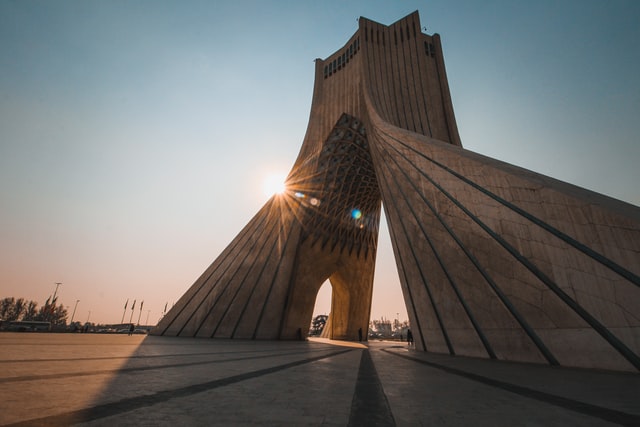
A city touching the snowcapped Albroz Mountains, Tehran is Iran’s capital city and the hub of its economy and politics. Bustling and brimming with a mix of past and present, Tehran has many places to explore as the first stopping point on a Persian journey.
The Treasury of National Jewels has priceless gems and precious metals that adorned the monarchs of various dynasties and were brought from as far away as India and Europe. The Peacock Throne made in the Qajar era is crafted of wood, covered in gold, and encrusted with jewels. Search for Iran on a globe that is studded with over 51,000 gemstones. Seas and oceans are depicted with emeralds, countries with rubies, and Iran is covered in diamonds.
The Golestan Palace, a UNESCO World Heritage Site, is one of the oldest sets of buildings in Tehran. Walk past the glimmering pools and admire its painted tiles and stained glass windows. This was the seat of government for the Qajar family which came to power in 1779 and made Tehran the capital of the country.
Learn more about the Shahs and 19th-century Iran at the Iranian Painting Gallery. Feel like a king in the Talar-e Ayaheh, Mirror Hall, built between 1874 and 1877 and used for royal weddings and a coronation. The Talar-e Berelian, the Brilliant Hall, has mirrored glass surfaces and twinkling chandeliers made by Iranian artisans.
For a more contemporary feel, visit one of the city’s many museums and then take a break at one of the cafes and tea houses with a sip of chai or a puff on a hookah. Cool down with a carrot and ice cream concoction that is garnished with cinnamon and nutmeg at the Grand Bazaar, a sprawling market with roof domes and an endless maze of vendors selling everything from gold to woven rugs. This is the buzzing life of Tehran with residents eating, socializing, and shopping in one place.




